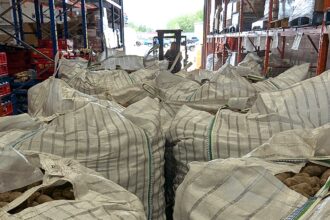The desperation for basic necessities has turned deadly in Gaza, where at least 35 Palestinians have been killed at aid distribution points in the past month alone. As humanitarian conditions deteriorate across the war-torn enclave, civilians are increasingly forced to risk their lives merely to secure food and water for their families.
“Every trip to collect aid has become a gamble with death,” says Mohammed Abed, a 43-year-old father of four from northern Gaza. “We stand for hours under the sun, sometimes under gunfire, just to get a bag of flour that must last us weeks.”
The crisis has intensified as traditional aid delivery systems have collapsed under the weight of the ongoing conflict. According to the United Nations Relief and Works Agency (UNRWA), coordinated distribution mechanisms that functioned before the war have been rendered largely ineffective, leaving civilians to scramble for whatever assistance manages to enter the territory.
The World Food Programme reports that nearly the entire Gaza population—over 2.2 million people—now faces acute food insecurity. Aid workers describe scenes of chaos at distribution points, where thousands gather in desperate attempts to secure supplies delivered by humanitarian convoys.
“What we’re witnessing represents a catastrophic breakdown in the humanitarian response,” explains Dr. Sarah Khalidi, an expert in conflict zone humanitarian operations. “When people are dying while seeking food aid, we’ve crossed a critical threshold in the crisis.”
Israeli officials maintain that they are facilitating aid entry through multiple crossing points, but international observers report that the volume remains woefully inadequate to meet the population’s needs. Humanitarian agencies estimate that only about 25% of required food supplies are currently reaching Gaza residents.
The logistical challenges are compounded by security concerns. Several aid distribution sites have been targeted in military operations, with both sides trading accusations over responsibility. Medical personnel at Al-Shifa Hospital report treating dozens of patients each week for injuries sustained at aid distribution points, from trampling incidents to gunshot wounds.
Economic analysts at the International Monetary Fund estimate the cost of Gaza’s humanitarian needs at approximately $1.2 billion for the next six months alone. This figure continues to rise as infrastructure deterioration compounds the crisis.
Meanwhile, diplomatic efforts to establish humanitarian corridors and cease-fires have yielded limited results. Canadian Foreign Affairs Minister has joined international calls for improved access for humanitarian aid, stating that “the protection of civilians and humanitarian workers must be paramount.”
As night falls in Gaza City, families return to damaged homes with whatever meager supplies they’ve managed to secure. For many, the choice between risking violence at aid sites or watching their children go hungry represents an impossible dilemma that no civilian should face.
The question now confronting the international community is stark: At what point does failing to ensure basic humanitarian protections for civilians constitute a moral failure that demands more forceful intervention?










